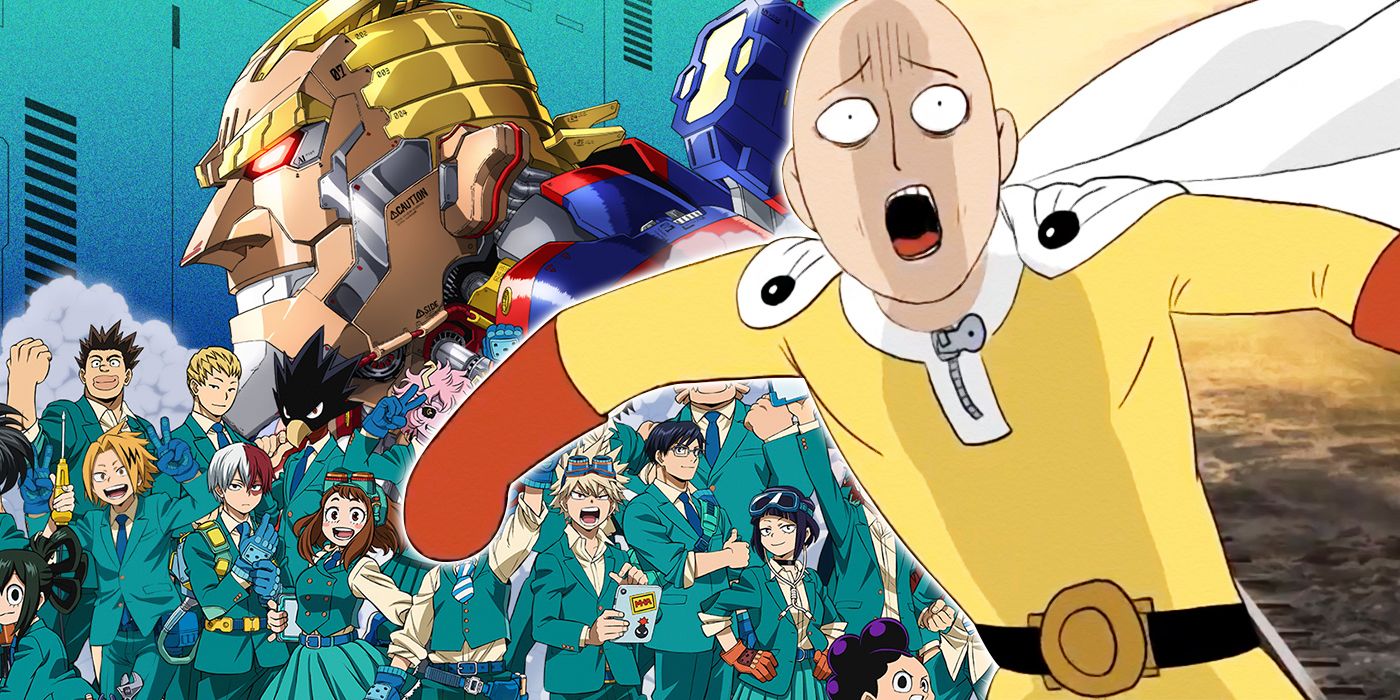Caped superheroes are mainly the stuff of Western fiction such as Marvel and DC comic titles or shows like The Boys or Invincible, either as traditional superhero stories, a deconstruction or anything in between. The world of Japanese anime is catching up, however, and in titles like One-Punch Man and My Hero Academia, being a hero is a formal, full-time job.
Organizations such as the Avengers and the Justice League govern themselves, while heroes like Batman and Daredevil are total rogues. But in MHA and One-Punch Man, heroes are more like government employees in capes, being legally recognized as working professionals while having some bureaucracy and red tape to guide them. This works well in both universes, but one hero organization has the edge over the other for a few notable reasons.
The Hero Association of One-Punch Man
True to its name, One-Punch Man‘s Hero Association is a large organization made up of legally recognized superheroes and office workers who serve as support staff. Heroes involved in the association are given a great deal of operational freedom for the most part, but given the size and white-collar bureaucracy of the Hero Association, it’s easy to imagine destructive heroes or rookies being held on a short leash — and the higher-ups likely bring the hammer down on those who act out of line. It’s well-known that the Hero Association’s bureaucratic gears turn rather slowly, which can hamper a hero’s progress toward higher ranks.
The Hero Association has vast resources and well-established traditions. To begin with, all heroes must undergo a formal entrance exam to gain admittance, after which the new hero will be assigned a rank: C, the lowest, followed by B, A and then the small but elite S rank. Heroes live within a competitive environment, striving to prove themselves worthy of a higher rank or racing each other to defeat monsters or villains that appear across the nation. Heroes might even form cliques or partnerships, such as the himedere hero Blizzard’s own Blizzard Group. This might prove troublesome for newbies who have far more competition than they do friends.
On the plus side, One-Punch Man‘s Hero Association is generously funded, boasting a massive headquarters, many armed troops and military-style vehicles on the ground and in the air, all to fight crime and protect society. In that way, the Hero Association is almost like a private army.
The Pro Hero Agencies of My Hero Academia
The world of Pro Heroes is decentralized in My Hero Academia, meaning those such as All Might, Kamui Woods and Mt. Lady can form or join hero agencies of their own choosing and generally make up their own rules. Agencies are like small businesses, with a leader overseeing everything and sidekicks acting as employees, who do everything from fighting villains to filling out paperwork or speaking to the press. Agencies can vary greatly in size and function, but Pro Heroes don’t even have to belong to one at all. Mirko, for example, prefers fighting solo and would not join an agency or the Hero Association.
MHA‘s Pro Heroes have not only sidekicks, but interns at their disposal. Those like the filler-only Selkie, the dragoon hero Ryukyu and the flaming Endeavor, can and will coach UA students in the ways of the hero and give them much-needed experience out in the field. Some pros fumble with this — such as Mt. Lady and even Best Jeanist — but in general, these Pro Heroes are secondary teachers to UA students, teaching them things that cannot be learned on UA’s campus.
Which Anime Superhero Organization Is Better Overall?
These two “professional superhero” models have many similarities and plenty of merits, but in the end, My Hero Academia‘s model is the better one. It’s true that the One-Punch Man Hero Association has the benefit of a huge budget and military-style support, but otherwise, MHA‘s Pro Heroes have it better and are more inspiring to watch.
The world of pro heroes is far more nurturing and supportive than that of the Hero Association. MHA‘s world dodges the cliques of the Hero Association and does away with unnecessary competitive pressure between heroes, allowing the pros to grow, develop and carve out their own professional niches at their own rate. Best of all, Pro Heroes often assume an active role in training and inspiring the next generation, from Hawks teaching Tokoyami a few moves and Ryukyu and Endeavor having three UA apprentices each. This helps keep the cycle of heroes moving; those in One-Punch Man are largely self-taught and self-reliant, rarely being seen learning from established pros.
The unofficial master/student dynamic between Saitama and Genos appears to be One-Punch Man‘s sole exception, meaning members of the Hero Association are oddly lonely and have few role models. But Midoriya, Uraraka and the rest in My Hero Academia all have mentors who can coach them and personally inspire them to carry on the torch in true style.
